Sometimes in life an “idea seed” is sown, takes root, grows, and bears fruit before your eyes. During the past year, I had a front-row seat to observe such a step-by-step unfolding—planting to harvesting.
The seed the Spirit deposited in my friend’s heart was a question: “Where in the Salt Lake City Cemetery is your fourth great-grandmother buried?” Becky acted on the question and went to the cemetery’s office to find the location of Lydia Kenyon Carter’s grave. The helpful office technician directed Becky to a paupers grave at plat D, block 7, lot 1. Becky learned that those who are buried in D-7-1 died between 1863 and 1867. She also learned that records do not exist as to the exact spot where someone is buried in a paupers grave.
Paupers graves are mass graves where unknown or indigent people are laid to rest in blankets or cheap coffins. These places of burial are known as potters fields in the New Testament (Matthew 27:3-8). Often, the deceased are not identified with a marker. Being buried in a pauper grave typically carries a stigma, a blight on the family’s reputation.
If you go to the Salt Lake City Cemetery, the largest city-operated cemetery in the United States, you may notice large areas with few or no headstones. Don’t assume no one is buried there. They may be paupers graves.
In Wikipedia, I found surprising information about how many people are buried in mass graves and what has been built on top of them. Here are a few examples:
- Lincoln Park in Chicago was the location of the City Cemetery potters field from 1843 to 1871. More than 15,000 people, including 4,000 Confederate soldiers, are buried here. Baseball fields have occupied these grounds since 1877.
- Madison Square Park, Washington Square Park, and Bryant Park in New York City originated as potters fields.
- Music Hall in Cincinnati, Ohio was built over a nineteenth-century potter’s field.
- Shockoe Hill African Burying Ground in Richmond, Virginia, came to be labeled as a potter’s field on maps in the 1870s. It was/is likely the largest burial ground for free people of color and the enslaved in the United States. The number of estimated interments made between 1816 and 1879 is upwards of 22,000.
- A potters field in Green Bay, Wisconsin was neglected and forgotten until 2014, when Veterans of Foreign Wars Post 9677, launched a fundraising campaign, spruced up the area, and identified many of the 296 people buried there from 1853 to 1973. The City Public Works now maintains the property (https://en.wikipedia.org/wiki/Potter%27s_field).
Returning to Becky at the Salt Lake City Cemetery. The office technician handed Becky a plat map with some of the names of persons buried in D-7-1.
You can see how hard the list was to read. After weeks of effort, we were able to decipher 68 names. The office technician told Becky she could find the rest of the names of people buried in D-7-1 in the cemetery archives. When she and others searched the archives, they found 12 more names, bringing the total to 80 who lie in an area meant for ten.
Thoughts of Grandma Lydia in a paupers grave, brought sadness and tears to Becky. She called me and asked what I knew about paupers graves. I did some research and wrote an article that Meridian Magazine published for Pioneer Day, July 2024. Working on these names increased our awareness and piqued our interest in every person buried in D-7-1.
With the list of eighty, Becky asked our ward family history specialists and some friends to help gather information. They were able to find 67 in FamilySearch. Entries were made for the other 13 as “unconnected individuals,” which makes it possible for their families to find them.
More research begged to be done. As additional information surfaced, we learned that nineteen died as children, many as infants. Several were teenagers. One man is listed only as “Danish Man.” Another example, George Selby is buried in D-7-1. In looking for his family, we found his wife. The record said, “no known children.” After more research, happily, we found five children. Their temple work is in progress.
After months of effort, a spreadsheet with the 80 names, their birthplaces, birth and death date, causes of death, and FamilySearch I.D. numbers was finalized. After reading through the spreadsheet, I wondered if I was related to any of them. I looked up each one in FamilySearch. I am related to 26, and my husband is related to 16, with not much overlap. Much to my amazement, my closest relative is Lydia Kenyon Carter, Becky’s fourth great-grandmother. Lydia is my third cousin, five times removed.
The passion to honor the occupants of D-7-1 increased. We started calling the project, “Lest We Forget.” Then an idea surfaced. What would it cost to purchase a marker and engrave all 80 names on it? Becky and I met with two of the family history specialists and prayed for direction. As we were talking through options, someone wondered out loud, “Why are we even considering this?” All four of us looked at each other and said something like, “I don’t know. It just feels important.” We could not explain why, and the feelings persisted. At the end of the meeting, we unanimously decided to try to get permission from the sexton, find out the specifications, and get bids from headstone and engraving companies. As the bids came in, we realized we would have to raise about $3,500, which seemed prohibitive, but the word began to spread.
The Salt Lake Canyon Trails Company of the Daughters of Utah Pioneers asked Becky to give a presentation about “Lest We Forget.” When the 80 women, most of whom are retired or elderly, realized they could help, they voted to support the project. At the next monthly meeting, their generous contributions exceeded the amount needed to fund the D-7-1 project! The stone marker and plaque were ordered.

On May 17, 2025 a Company Jubilee was held to celebrate the 178th anniversary of Pioneer Day, which commemorates the arrival of Brigham Young and the pioneers in the Valley of the Great Salt Lake. Vignettes of five women whose remains lie in D-7-1 were presented: Lydia Kenyon Carter (1799-1866), Elizabeth Crouch (1847-1865), Jane Hardcastle (1847-1866), Rebecca Adams Rogers (1798-1864), and Mary Davies Thomas (1823-1865).
After Jane Hardcastle’s story was shared, I led the group in singing new words that had come to my mind, patterned after Rudyard Kipling’s words “God of Our Fathers, Known of Old,” hymn 80.
Laid down to rest in paupers grave,
We lie forgotten, nameless, wait.
No mem’ry carved in stone is ours.
No epitaphs, inscriptions, dates.
Lord, God of Hosts, be with us yet,
Though they forget, though they forget.
To you in mass, we found your names.
Now set in bronze for all to know.
As pioneers, you forged the path.
We honor you; our thanks bestow.
Lord, God of Hosts, be with us yet,
Lest we forget, lest we forget.
As a closing song, a young mother played her guitar as she and her three daughters sang, Come, Come, Ye Saints. The audience joined in the last verse:
And should we die before our journey’s through,
Happy day! All is well!
We then are free from toil and sorrow, too;
With the just we shall dwell!
But if our lives are spared again
To see the Saints their rest obtain,
Oh, how we’ll make this chorus swell—
All is well! All is well!
On June 8, the memorial marker was dedicated on site at D-7-1. (See the photo at the top of the article.)
You are probably expecting this to be the end, but the desire to discover more names continues. Adjacent to D-7-1 is D-7-2, another paupers grave that you can see on the plat map above. The plaque with the names of people in D-7-1 is on the front side of the stone marker. With the generous money already donated, another plaque can be purchased and engraved to celebrate the residents of D-7-2. It will be mounted on the back side of the same marker. I can hardly wait to find out how many in D-7-2 are my relatives and what temple work is needed.
As we begin to get to know the people in D-7-2, the questions continue: Why are we even doing this, and why does identifying these people feel so important? I think our relatively tiny “Lest We Forget” project is part of what President Nelson was referring to when he rhetorically asked: “Do you see what is happening right before our eyes?” He spoke of the hastening to gather Israel on both sides of the veil. In April 2025, he announced where fifteen more temples will be located, bringing the total number of temples he has announced to two hundred. This means that of the Church’s 382 temples dedicated, under construction, or announced, President Nelson has announced over half—52.4%, and he has only been the prophet since January 14, 2018.
I believe the dead want to be found; they want to be remembered; and they are most anxious to have their temple work done.













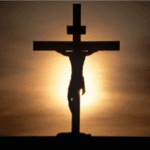
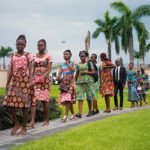
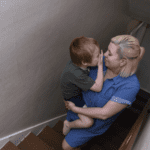
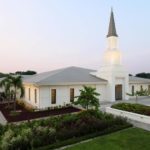
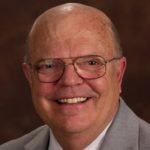
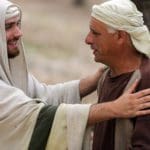
Peggy ClarkJune 24, 2025
I enjoyed reading this article and was surprised to learn that one of the people buried there had the same name, birth and death dates of my great-great-grandfather Ebenezer Crouch's sister, Elizabeth; I have verified that she is the same one. These ancestors were my pioneer children who "walked and walked and walked" to the valley in 1856. Nine of the twelve children born into this family died as infants or toddlers. Eb lived to be 91 years old, and I met him not long before he died when I was four years old.
Tracy TippettsJune 24, 2025
I grew up in a part member family. My mother was a devout and dedicated member of the Church with ancestry and genealogy going back to the 1500's. Her ancestors came from England as Pioneers, and settled in Utah and Idaho. My father, grandfather, and great grandfather were all never baptized or apostate inactive members, although they had come from early Pioneer heritage and history. My father and grandfather were very antagonistic, bitter, and critical of the Church, its leaders and members, and did not believe it was true. Because of that negative influence and attitude, I grew up feeling like a half-breed, and unworthy member myself. Ten years ago a High Council speaker came to my ward and gave a talk about a man with my same last name, that was an early convert to the Church near Palmyra, New York in 1832...just two years after it was organized! He was the Branch President, when John Tanner was baptized, and organized the relocation of members to Kirtland, Ohio. He donated money for the construction of the Temple there, and helped build it. Joseph and Emma Smith hosted the wedding dinner in their home when he and his wife were married. He lived next to Wilford Woodruff in Nauvoo, and they were good friends! He died in Winter Quarters in December, 1846 when he was only 38 years old. His son was born three months after he died. That was my great grandfather. His widow and newborn baby went to Utah in 1847 in the wagon with Willard Richards, who was with Joseph and Hyrum in Carthage Jail when they were murdered by the angry mob. I didn't know or learn any of this amazing story and information until I was 65 years old! So much for being a half-breed!